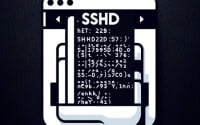Chmod Recursive | File Permissions in Unix/Linux Explained

Managing file permissions recursively on Unix/Linux servers at IOFLOOD often requires using the chmod command with the recursive option. In today’s article, we’ll explore the process of using chmod recursively in Unix/Linux, in order to empower our dedicated hosting customers and fellow developers with the knowledge and skills needed to efficiently manage file permissions across directories and subdirectoriess.
This guide will walk you through the process of using chmod recursively, from basic use to advanced techniques. We’ll explore chmod’s core functionality, delve into its advanced features, and even discuss common issues and their solutions.
So, let’s dive in and start mastering chmod recursive!
TL;DR: How Do I Use chmod Recursively in Unix/Linux?
To use chmod recursively in Unix/Linux, you use the
-Roption with the chmod command, used with the syntaxchmod -R <permission> /path/to/directory. This option allows you to change the permissions of the directory and its contents.
Here’s a simple example:
chmod -R 755 /path/to/directory
# Output:
# Changes the permissions of the directory and its contents to 755 (read-write-execute for the owner, and read-execute for group and others).
In this example, we use the -R option with the chmod command to change the permissions of the directory and all its contents to 755. This sets the permissions to read-write-execute for the owner, and read-execute for the group and others.
This is a basic way to use chmod recursively in Unix/Linux, but there’s much more to learn about managing file permissions effectively. Continue reading for a more detailed understanding and advanced usage scenarios.
Table of Contents
Basics of chmod Recursive
To start, let’s explore the basic use of chmod with the -R option. This option is what allows chmod to work recursively, meaning it can change the permissions of a directory and all its contents, including subdirectories and their contents, and so on.
Here’s a simple example:
chmod -R 644 /home/user/documents
# Output:
# Changes the permissions of the 'documents' directory and all its contents to 644 (read-write for the owner, and read for group and others).
In this example, we’ve asked chmod to change the permissions of the directory /home/user/documents and all its contents to 644. This sets the permissions to read-write for the owner, and read for the group and others.
The -R option is what allows chmod to do this recursively. Without it, chmod would only change the permissions of the directory itself, leaving the contents untouched.
This command is a powerful tool, but it’s important to use it carefully. Changing file permissions can have significant effects, especially when done recursively. Always double-check your commands before running them, and consider testing them on a small scale before applying them to large directories.
Intermediate Recursive Features
After getting comfortable with the basic usage of chmod recursive, it’s time to delve into more advanced features. Specifically, we’ll look at different permission levels and special permissions, such as setuid, setgid, and the sticky bit.
Understanding Different Permission Levels
In Unix/Linux, file permissions are represented as a three-digit number, such as 644 or 755. Each digit represents the permissions for the owner, group, and others, respectively. Here’s a quick breakdown:
- 7 means read (4), write (2), and execute (1) permissions are given (4+2+1=7).
- 6 means read (4) and write (2) permissions are given (4+2=6).
- 5 means read (4) and execute (1) permissions are given (4+1=5).
- 4 means only read permission is given.
Let’s see this in action:
chmod -R 644 /home/user/documents
chmod -R 755 /home/user/scripts
# Output:
# The 'documents' directory and all its contents now have read-write permissions for the owner, and read permissions for the group and others.
# The 'scripts' directory and all its contents now have read-write-execute permissions for the owner, and read-execute permissions for the group and others.
In the above example, we’ve set different permissions for two directories. The ‘documents’ directory is set to 644, meaning the owner can read and write but not execute, while the group and others can only read. The ‘scripts’ directory is set to 755, meaning the owner has full permissions, while the group and others can read and execute but not write.
Special Permissions: setuid, setgid, and Sticky Bit
Beyond the basic permissions, chmod also allows you to set special permissions like setuid (user ID), setgid (group ID), and the sticky bit. These permissions provide additional control over how files and directories are accessed.
Here’s a brief overview:
- setuid: When set on an executable file, it allows the file to be executed with the permissions of the file’s owner.
- setgid: When set on a directory, it forces all files and subdirectories created within it to inherit the group of the directory.
- Sticky bit: When set on a directory, it restricts deletion of files within it. Only the file owner, directory owner, or root user can delete the file.
Let’s see an example of setting these special permissions:
chmod u+s /path/to/executable_file # sets setuid
chmod g+s /path/to/directory # sets setgid
chmod +t /path/to/directory # sets sticky bit
# Output:
# The 'executable_file' now has the setuid permission, meaning it can be executed with the permissions of the file's owner.
# The 'directory' now has the setgid permission, meaning any files or subdirectories created within it will inherit its group.
# The 'directory' now has the sticky bit set, meaning only the file owner, directory owner, or root can delete files within it.
These special permissions provide advanced control over file and directory access, making chmod a powerful tool for managing permissions in Unix/Linux systems.
Alternatives to chmod Recursive
While chmod recursive is a powerful tool, it’s not the only way to manage file permissions in Unix/Linux. Let’s take a look at some alternative approaches, such as using the find command or Access Control Lists (ACLs).
Using the Find Command
The find command can be a powerful ally when changing file permissions. It gives you more control over which files to target, based on criteria such as file type, name, modification time, and more.
Here’s an example of using find with chmod:
find /path/to/directory -type f -exec chmod 644 {} \;
# Output:
# Finds all files (-type f) in the specified directory and changes their permissions to 644 (read-write for the owner, read for group and others).
In this example, we’re using find to locate all files (-type f) in a specified directory, and then executing (-exec) the chmod command on each file. This gives us more granular control over which files to change permissions for.
Leveraging Access Control Lists (ACLs)
Access Control Lists provide an additional layer of permissions, allowing you to set permissions for specific users or groups. This can be useful in multi-user environments, where you might need to grant different levels of access to different users.
Here’s an example of setting an ACL:
setfacl -R -m u:username:rwx /path/to/directory
# Output:
# Sets an ACL on the specified directory, granting read-write-execute permissions to the specified user.
In this example, we’re using setfacl to modify (-m) the ACL for a directory, granting read-write-execute permissions to a specific user (u:username:rwx). The -R option allows this to be done recursively.
Both the find command and ACLs offer powerful alternatives to chmod recursive, each with its own strengths and weaknesses. The find command provides more granular control over file selection, while ACLs offer more detailed control over user and group permissions. Depending on your specific needs, one may be more suitable than the other.
Common Issues in chmod Recursive
While using chmod recursive can be straightforward, you might encounter some common issues. Let’s discuss some of these potential roadblocks and how to overcome them.
Dealing with ‘Operation not permitted’ Errors
One common issue is the ‘Operation not permitted’ error. This typically happens when you try to change permissions for a file or directory owned by another user or system.
Here’s an example of this error and how to resolve it:
sudo chmod -R 755 /path/to/directory
# Output:
# Changes the permissions of the directory and its contents to 755 (read-write-execute for the owner, and read-execute for group and others).
In this example, we’ve used the sudo command to run chmod as the root user. This gives us the necessary permissions to change the file or directory, resolving the ‘Operation not permitted’ error.
Considerations When Changing Permissions
When using chmod recursive, it’s important to consider the impact of your changes. Changing permissions can affect how users and applications interact with files and directories, and can potentially lead to issues such as inaccessible files or security vulnerabilities.
For example, granting execute permissions to all users for a directory can allow them to run scripts or programs within that directory, which could be a security risk.
chmod -R 777 /path/to/directory
# Output:
# Changes the permissions of the directory and its contents to 777 (read-write-execute for everyone), which could be a security risk.
In this example, we’ve set the permissions to 777, granting read, write, and execute permissions to everyone. While this may solve immediate access issues, it could potentially expose your system to security risks.
Always consider the implications of changing permissions, especially when done recursively. When in doubt, consult the documentation or seek advice from experienced Unix/Linux users.
Core Concepts: File Permissions
To fully understand the power of chmod recursive, it’s crucial to grasp the underlying concepts of Unix/Linux file permissions and the chmod command itself.
Understanding Unix/Linux File Permissions
Unix/Linux file permissions determine who can read, write, and execute a file. These permissions are divided into three categories: owner, group, and others. Each category can have any combination of read (r), write (w), and execute (x) permissions.
Here’s an example of viewing file permissions:
ls -l /path/to/file
# Output:
# -rw-r--r-- 1 owner group 123 Jan 1 00:00 /path/to/file
In this example, the -rw-r--r-- string represents the file’s permissions. The first character (-) indicates the file type (a - for regular files, d for directories). The next three characters (rw-) represent the owner’s permissions (read and write), the following three (r--) represent the group’s permissions (read), and the final three (r--) represent others’ permissions (read).
The chmod Command: A Closer Look
The chmod command is used to change these permissions. It can be used with symbolic notation (like u+x to add execute permission for the owner) or with octal notation (like 755 to set read-write-execute for the owner, read-execute for the group, and read-execute for others).
Here’s an example of using chmod to change file permissions:
chmod u+x /path/to/file
# Output:
# Adds execute permission for the owner of the file.
In this example, we’ve used chmod to add execute permission for the owner (u+x) of the file. This allows the owner to run the file as a script or program.
Understanding these fundamentals is key to mastering chmod recursive and effectively managing file permissions in Unix/Linux systems.
Practicality of Recursive Changes
The power of chmod recursive extends beyond just changing file permissions. It plays a crucial role in various system administration tasks and scripting, making it an indispensable tool in Unix/Linux environments.
System Administration Tasks
In system administration, managing file permissions is a daily task. Whether it’s granting a user access to a directory or locking down sensitive files, chmod recursive is often the go-to solution. Its ability to change permissions for a directory and all its contents simplifies the task of securing a file system.
sudo chmod -R 700 /path/to/sensitive_data
# Output:
# Changes the permissions of the 'sensitive_data' directory and all its contents to 700 (read-write-execute for the owner only), effectively locking down the files.
In this example, we’ve used chmod recursive to change the permissions of a directory and its contents to 700, granting full access to the owner and locking out everyone else. This is a common task when securing sensitive data.
Scripting
chmod recursive is also widely used in scripting. Scripts often need to modify file permissions to ensure they can read, write, or execute files as needed. chmod recursive allows these changes to be made efficiently, even when dealing with directories full of files.
#!/bin/bash
# A script to lock down all files in a directory
dir=$1
if [[ -d $dir ]]; then
chmod -R 700 $dir
echo "Permissions of $dir and its contents have been changed to 700."
else
echo "$dir is not a directory."
fi
# Output:
# If the specified argument is a directory, the script changes its permissions and all its contents to 700 and outputs a confirmation message. If the argument is not a directory, it outputs an error message.
In this script, we’re using chmod recursive to change the permissions of a directory and its contents based on a command-line argument. This could be used as part of a larger script to secure multiple directories at once.
Exploring Related Concepts
Understanding chmod recursive also opens the door to related concepts like file ownership and groups. These concepts are closely tied to file permissions and are crucial for managing access in Unix/Linux systems.
For instance, the chown command can change the owner of a file or directory, while the chgrp command can change the group. These commands often go hand in hand with chmod when managing access.
chown user /path/to/file
chgrp group /path/to/file
# Output:
# Changes the owner of the file to 'user' and the group to 'group'.
In this example, we’ve used chown to change the owner of a file and chgrp to change the group. These changes can affect who has access to the file based on their permissions.
Further Resources for Mastering chmod Recursive
To further your understanding of chmod recursive and related concepts, here are some external resources:
- An In-depth Guide to Linux File Permissions: This tutorial provides a comprehensive overview of Linux file permissions, including how to use
chmodand related commands. Unix/Linux – File Permission / Access Modes: This guide from TutorialsPoint covers Unix/Linux file permissions in detail, with clear explanations and examples.
Linux ACLs: Access Control Lists Tutorial: This tutorial delves into Access Control Lists, a powerful alternative to traditional Unix/Linux permissions.
Recap: chmod Recursive User Guide
In this comprehensive guide, we’ve explored the ins and outs of using chmod recursively, a powerful tool for changing file permissions in Unix/Linux systems.
We began with the basics, learning how to use the chmod command with the -R option for basic file permission changes. We then delved into more advanced territory, discussing different permission levels and special permissions like setuid, setgid, and the sticky bit. We also tackled common issues you might encounter when using chmod recursively, such as ‘Operation not permitted’ errors, and provided solutions to overcome these challenges.
Furthermore, we explored alternative approaches to chmod recursive, such as using the find command or Access Control Lists (ACLs), each with its own strengths and weaknesses. This comparison gave us a broader perspective on managing file permissions in Unix/Linux systems.
| Method | Pros | Cons |
|---|---|---|
| chmod Recursive | Robust, easy to use | Might require root access for some files/directories |
| Find Command | More granular control over file selection | More complex command structure |
| ACLs | Detailed control over user and group permissions | Not universally supported on all Unix/Linux systems |
Whether you’re just starting out with chmod recursive or you’re looking to level up your file permission management skills, we hope this guide has given you a deeper understanding of chmod recursive and its capabilities.
With its ability to change permissions for a directory and all its contents, chmod recursive is an essential tool for efficient file permission management in Unix/Linux systems. Happy coding!


